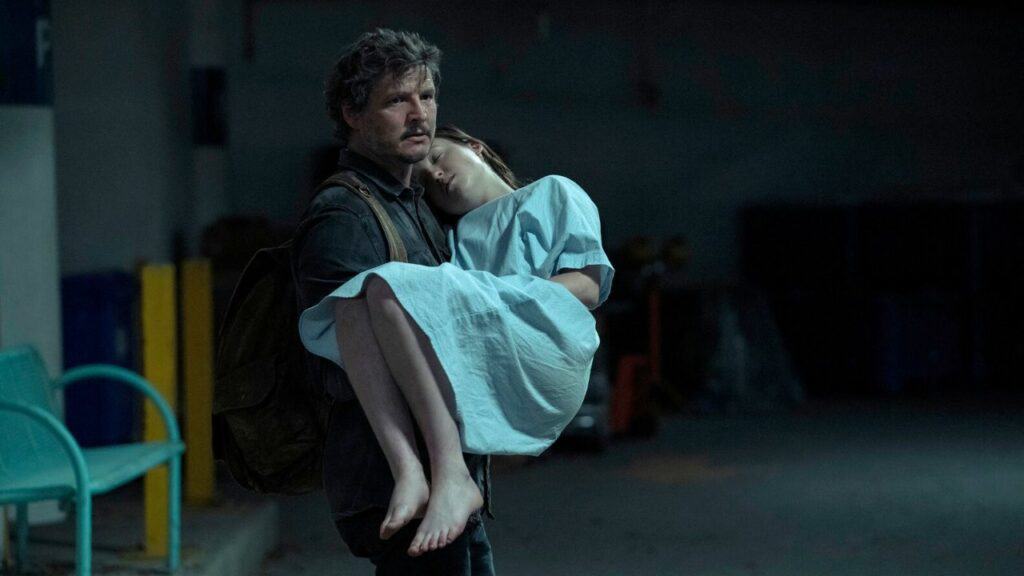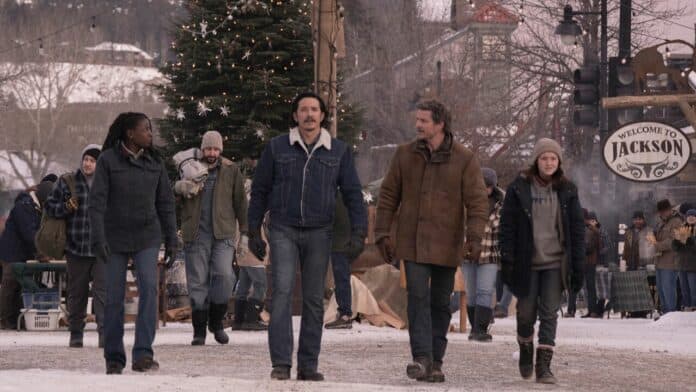In The Last of Us, a post-apocalyptic world serves as the backdrop for a nuanced exploration of evolving family dynamics.
In HBO’s The Last of Us, the exploration of family dynamics takes center stage, weaving through the desolate tapestry of a world ravaged by an apocalyptic event.
This article delves into the intricate portrayal of familial relationships within the show, unearthing the layers of connection, loss, and the redefinition of what it means to be a family in a world stripped of its former normalcy.
The concept of found families
At the heart of The Last of Us is the concept of found families, which is most prominently seen in the relationship between Joel and Ellie.
Initially brought together by circumstance rather than choice, their bond evolves from a mere survival alliance to a deep, familial connection.
Joel, who is haunted by the death of his biological daughter at the start of the outbreak, gradually begins to see Ellie as a daughter figure.

This transformation is beautifully illustrated in the scene where Joel chooses to save Ellie over allowing a surgery that could potentially develop a cure for the infection.
It signifies the depth of their bond, transcending beyond blood relations to a chosen, familial love.
Loss and its impact on family
Loss is a pervasive theme in The Last of Us, significantly impacting the family dynamics of the characters.
The loss of Joel’s daughter, Sarah, is a defining moment that leaves Joel emotionally scarred and reluctant to form new attachments.
This loss profoundly shapes his interactions with Ellie, initially making him distant and guarded.
Another poignant example is the backstory of Ellie, who, orphaned at a young age and shuffled through various military boarding schools, yearns for a sense of family and belonging, which she eventually finds in her relationship with Joel.
The struggle to maintain normalcy in relationships
In the face of constant danger and societal collapse, The Last of Us portrays the characters’ struggle to maintain normalcy in their familial relationships.
Bill and Frank’s relationship in The Last of Us illustrates the struggle to maintain normalcy in relationships amidst chaos.

Living isolated in a fortified town, they strive to preserve a semblance of domestic life.
Their interactions, filled with bickering, affection, and routine, mirror the dynamics of a long-term couple, showing how even in a world turned upside down, human connections retain their complexity and normalcy.
The duality of protection and freedom
A recurring theme in the family dynamics of The Last of Us is the duality of protection versus freedom.
The relationship between Marlene, the leader of the Fireflies, and Ellie offers a nuanced look at the duality of protection and freedom.
Marlene has promised Ellie’s deceased mother to keep Ellie safe, a promise that conflicts with her mission for the greater good.
This tension comes to a head when Marlene faces the decision to sacrifice Ellie for a potential cure.
Her struggle between her protective instinct for Ellie and her duty to humanity encapsulates this duality.
In conclusion: Reflecting the essence of family
The Last of Us offers a compelling exploration of family dynamics, portraying how relationships can be formed, tested, and redefined in extreme circumstances.
The show reveals that family goes beyond biological connections, encompassing the bonds formed through shared experiences, mutual care, and understanding.
In the post-apocalyptic world of The Last of Us, the concept of family becomes a source of strength, resilience, and hope, providing a poignant contrast to the backdrop of loss and despair.
Also Read: The role of friendship and trust in The Last of Us

